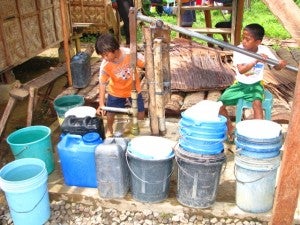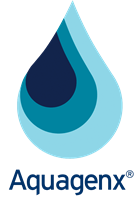Wine to Water Uses CBT in Philippines Post Super Typhoon Haiyan
Wine to Water is a non-profit organization focused on providing clean water to people in need around the world. www.winetowater.org
Challenge
In September 2014, Wine to Water conducted a water quality testing and training workshop in Tacloban, Philippines with Volunteers for the Visayans, a Philippines-based non-profit organization. Both organizations were providing water, sanitation and health assistance coupled with household water treatment and safe storage for families displaced by Super Typhoon Haiyan/Yolanda. Wine to Water needed a portable method for on-site testing because water collection points were far from water testing laboratories, and the laboratories were not readily accepting bulk tests. They also wanted a testing method that quantified test results.
Solution
 Wine to Water utilized the Compartment Bag Test (CBT) to evaluate an array of water samples taken from numerous sites. The testing strategy included piped water and chlorinated public systems, deep wells, holding tanks, unprotected shallow wells, surface waters, capped wells and hand pumps, rainwater catchment and hollow-tube micro filtration. Wine to Water used the CBT to evaluate point of use water sources prior to filtration and again at post filtration sample collection. The CBT was also a training tool for their local partners to educate local populations on the importance of WASH and HWTS at the household and community level.
Wine to Water utilized the Compartment Bag Test (CBT) to evaluate an array of water samples taken from numerous sites. The testing strategy included piped water and chlorinated public systems, deep wells, holding tanks, unprotected shallow wells, surface waters, capped wells and hand pumps, rainwater catchment and hollow-tube micro filtration. Wine to Water used the CBT to evaluate point of use water sources prior to filtration and again at post filtration sample collection. The CBT was also a training tool for their local partners to educate local populations on the importance of WASH and HWTS at the household and community level.
Test Results
Test results obtained on-site with the CBT enabled Wine to Water to understand contamination levels and filtration benefits. Results revealed that unprotected water sources were unsafe for drinking, whereas properly filtered contaminated water proved to be safe for drinking. Wine to Water was able to explain test results because the CBT is user-friendly and visual, which are key components in addressing water quality initiatives.
CBT Compared to Other Testing Method
Wine to Water also used general presence/absence testing kits, which often gave false positives for bacteria and coliform. “The CBT provided a more reliable way of testing so we could evaluate testing conditions and results more thoroughly,” says Brad Ponack, International Projects Coordinator at Wine to Water. “We were able to rapidly assess the condition of the primary water source and evaluate it efficiently prior to filtration and again post-filtration.”
Benefits the CBT Provided
 Visual test results from the CBT informed and directed local communities to select water sources that are probably safe for drinking and understand which water sources require filtration. Wine to Water was able to work closely with their ground partners during the training workshop, and this common experience allowed them to move forward with their baseline health surveys via documented water quality sampling. The workshop also fostered common integration of WASH and HWTS activities.
Visual test results from the CBT informed and directed local communities to select water sources that are probably safe for drinking and understand which water sources require filtration. Wine to Water was able to work closely with their ground partners during the training workshop, and this common experience allowed them to move forward with their baseline health surveys via documented water quality sampling. The workshop also fostered common integration of WASH and HWTS activities.
Wine to Water could also easily identify community and household needs based on results of the CBT. They resolved to implement and follow up with on-site evaluations, conduct responsible water filtration distribution and provide a general assessment of primary water source qualities that were previously unknown.
Conclusion
“The CBT will be a regular test we use because its quantitative, visual indicators help explain levels of contamination in a given sample while illustrating the benefits of water filtration at the household and community level,” says Ponack. “It is tremendously helpful to have the CBT and take samples in the field and process test results on location.”
Continues Ponack, “We prefer the CBT to presence/absence test kits because the CBT provides visual indicators that quantify and categorize water quality beyond yes/no validation. “With the CBT, We were able to utilize the test results as a tool that helped address the need for water source preservation and the need for water filtration across all samples taken.”

